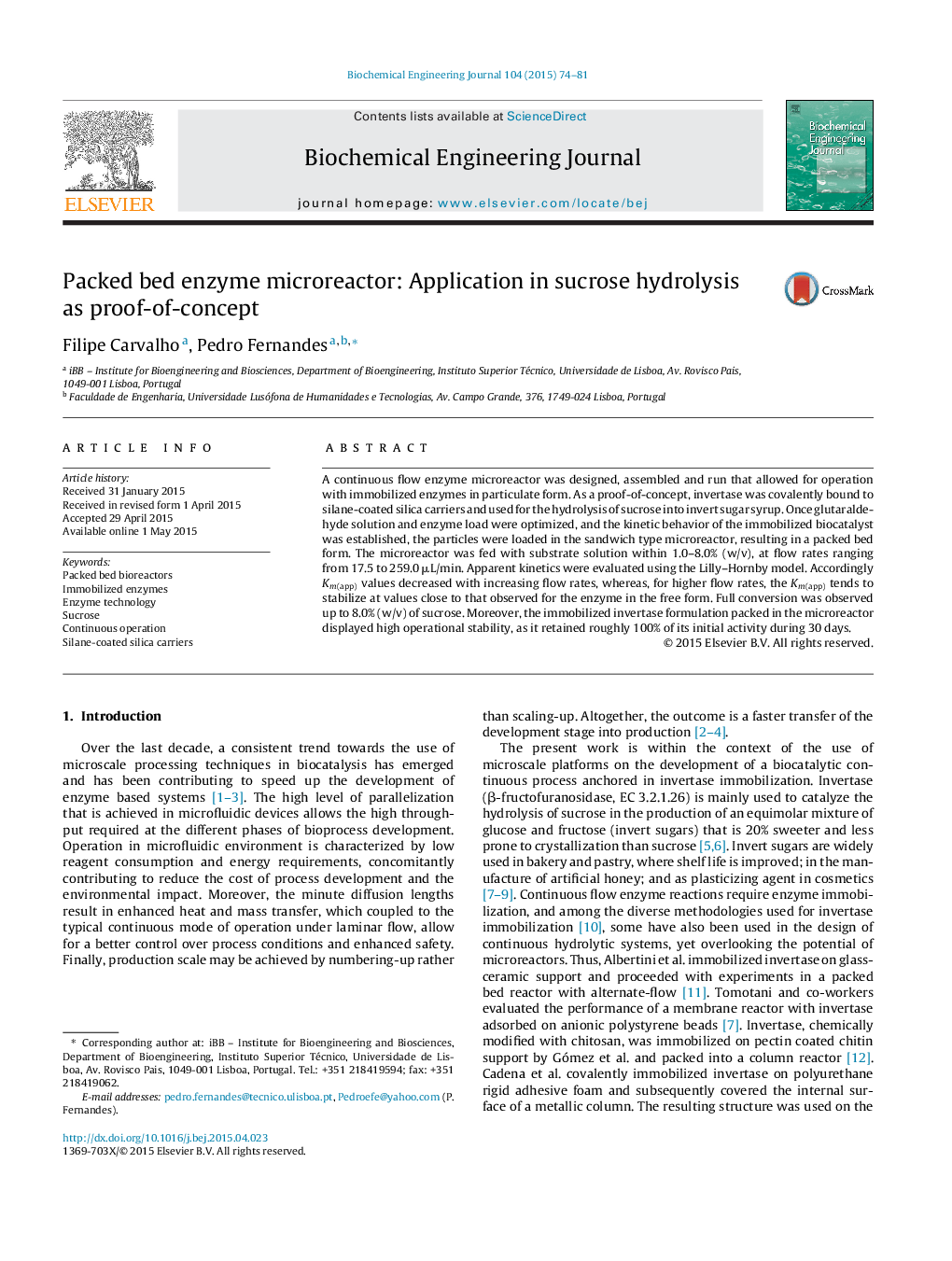| Article ID | Journal | Published Year | Pages | File Type |
|---|---|---|---|---|
| 2791 | Biochemical Engineering Journal | 2015 | 8 Pages |
•Covalent immobilization of invertase in CPC was optimized.•Immobilized invertase was successfully used in a continuous flow reactor.•Invertase immobilized in CPC displayed high operational stability and stability in PBR.
A continuous flow enzyme microreactor was designed, assembled and run that allowed for operation with immobilized enzymes in particulate form. As a proof-of-concept, invertase was covalently bound to silane-coated silica carriers and used for the hydrolysis of sucrose into invert sugar syrup. Once glutaraldehyde solution and enzyme load were optimized, and the kinetic behavior of the immobilized biocatalyst was established, the particles were loaded in the sandwich type microreactor, resulting in a packed bed form. The microreactor was fed with substrate solution within 1.0–8.0% (w/v), at flow rates ranging from 17.5 to 259.0 μL/min. Apparent kinetics were evaluated using the Lilly–Hornby model. Accordingly Km(app) values decreased with increasing flow rates, whereas, for higher flow rates, the Km(app) tends to stabilize at values close to that observed for the enzyme in the free form. Full conversion was observed up to 8.0% (w/v) of sucrose. Moreover, the immobilized invertase formulation packed in the microreactor displayed high operational stability, as it retained roughly 100% of its initial activity during 30 days.
